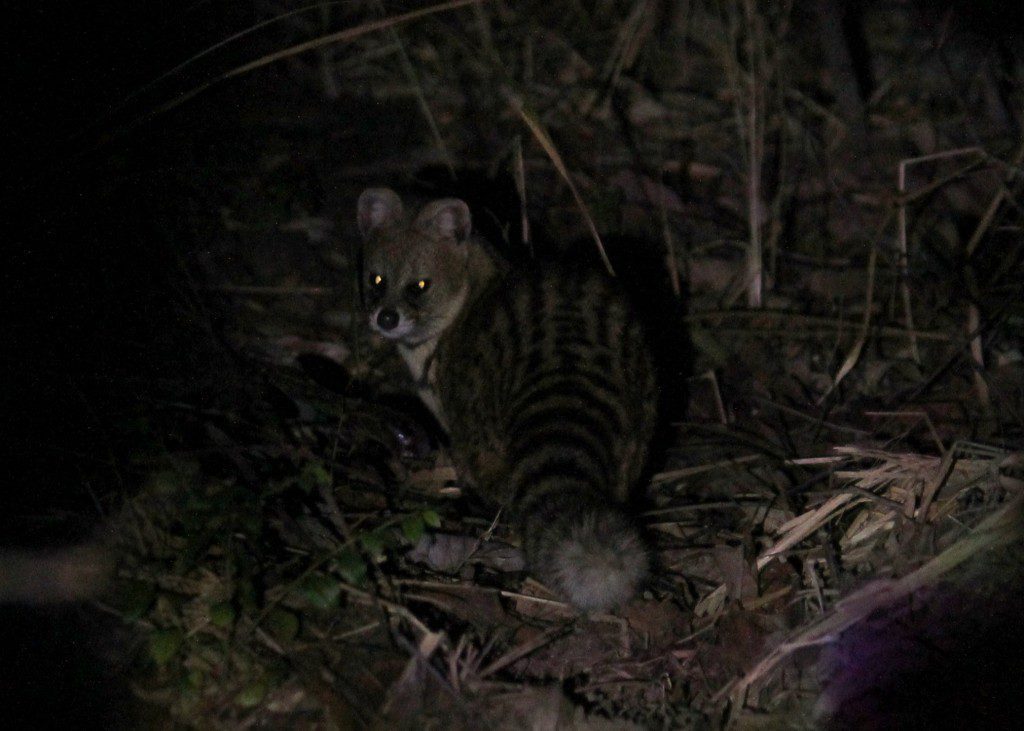Evolution of Tigers
The word tiger conjures images of a stunning, black and orange striped, tawny Big Cat with regal strides. But have you ever wondered how this cat got its name? And what could be the meaning behind this name?
Let’s go back into history and find out how this animal has evolved over a period of time and is known to be the King of the Jungles.
History of Tigers
All big and small cats come under the carnivore family called Felidae.
Scientifically tiger is known as “Panthera tigris”. Panthera is a genus given to animals that possess the ability to roar For example, Tiger, Lion, Jaguar, and Leopard. These animals have a free-floating hyoid bone in their throat which helps them to generate a roaring sound. However, as per new studies; the ability to roar is generated by the larynx commonly called the voice box. Recent genetic studies have included a Snow leopard in the genus Panthera though it doesn’t have the ability to roar.
In Greek language Tigris means “swift river” which originated from Turkey and ends in Iraq’s Persian Gulf. And as per Kurdish meaning, Tir means arrow and Jir or Jehar means poison so the word combines to Tirjir, whose pronunciation and spelling later became Tigris. Both swift flowing river and fast and poisonous arrow were associated to the word Tiger.
Miacid was the oldest ancestor of all the modern carnivores found on the Earth today. They are the extinct group of carnivores, which gave rise to dogs, bears, skunks, mongooses, cats, and hyenas. Miacids dated back to 50 million years ago. They were known to climb trees; had short legs, and long claws, and could ambush their prey. They use to look similar to pine martens.
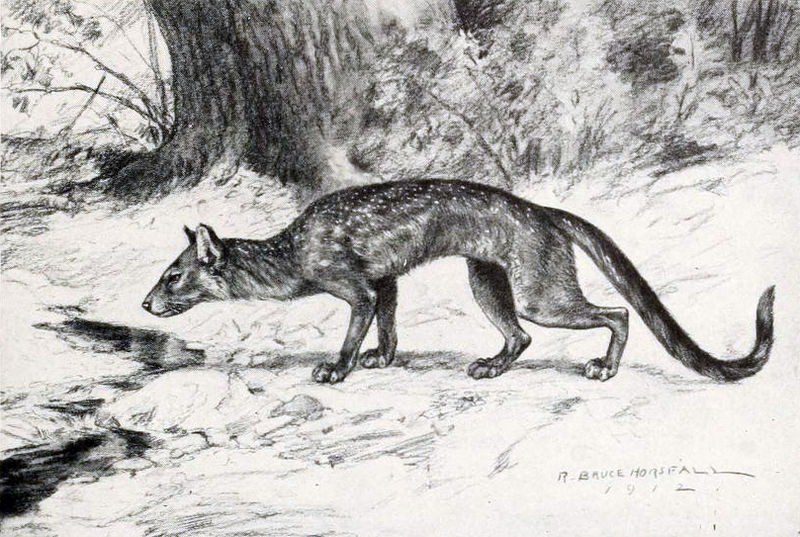
Pseudaelurus, that was found on the earth about 20 million years ago is said to be the direct ancestor of 40 cat species living on earth today.
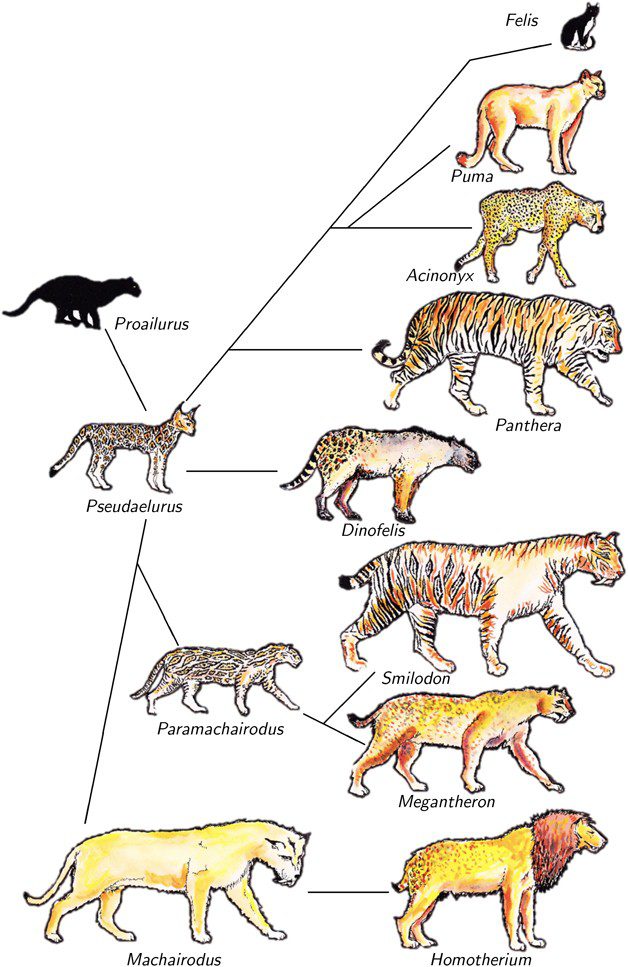
Tigers might have walked the earth million years ago, and the earliest of tiger fossils which was found in South Asia, dates backs to 2 million years old. Early tiger fossil have been found in China, Java and Sumatra. In Russia the fossil found was seven hundred thousand year old and in India it was Ten thousand years old.
The early evidence comes from sculpted tiger on seals of Indus Valley civilization of Harappa and Mohenjodara, placed at 2500 to 1700 BC.
Sub species of Tigers:
Amur Tiger – (Distribution Southern Russian Far East and Northeast China)
Bengal Tiger – (Distribution India, Nepal, Bhutan and Bangladesh)
Malyan Tiger – (Distribution Malay Peninsula)
South China Tiger – (Native to Southern China, few individuals surviving in captivity)
Sumatran Tiger – (Distribution Indonesian island of Sumatra)
Indo-Chinese Tiger – (Distribution Vietnam, Cambodia, Laos, Burma, Thailand and Southwest China)
Bali Tiger – Extinct 1937 – (Bali island)
Javan Tiger- Extinct 1970 – (Java island)
Caspian Tiger – Recorded in the wild before the end of 20thcentury. (Distribution around Caspian Sea, Turkey and Northern Iran)
Why Tiger is a Supreme Hunter?
Tigers are considered as supreme hunters because of the weaponry they have which other carnivores might be missing.
1. Skeleton of Tiger:
Distinguishing between tiger and lion skeleton is difficult as their size and shape is similar. The flexibility of the tiger’s skeleton and its long hind legs, allows them to jump to the height of 10 to 12 feet. A tiger’s jaw can produce a bite force of 1000 pounds. A short rounded skull and the jaw muscle attached to a bony ridge on the top of the skull called the sagittal crest, gives power to the tiger’s lower jaw. In total tigers have thirty teeth that measures upto 2.5 to 3 inches long, which makes for the largest canines of all big cats.
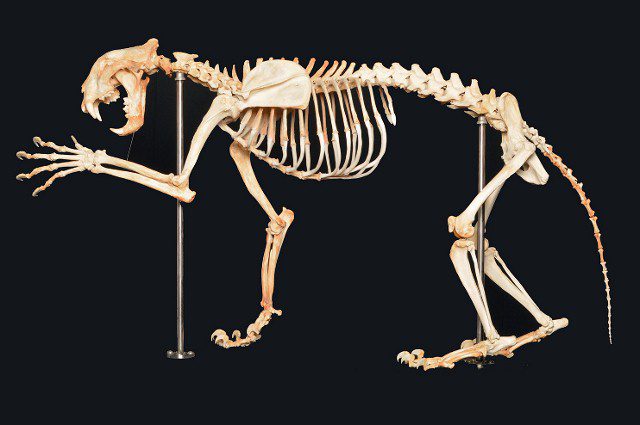
2. Claws of Tigers:
A tiger claws can take the face off of a human in one swipe. Claws help it to grab its prey and bring it down, until the jaws can go for the prey’s neck. A tiger claw has a dew claw on its front paws, which act like a thumb in gripping the prey. It also helps in and and does not touch the ground when the tiger is on the move.
3. Eyes of Tigers:
Eyesight plays a significant role in tiger’s hunting technique. Tigers have a forward facing eye which is known as Binocular Vision, which we humans also possess, allowing the animal to judge its prey distance accurately. The retina of the tiger’s eyes has an abundance of receptor cells known as “rods” which are sensitive to low light, allowing the animal to see 6 times better in night than the eye sight of humans.
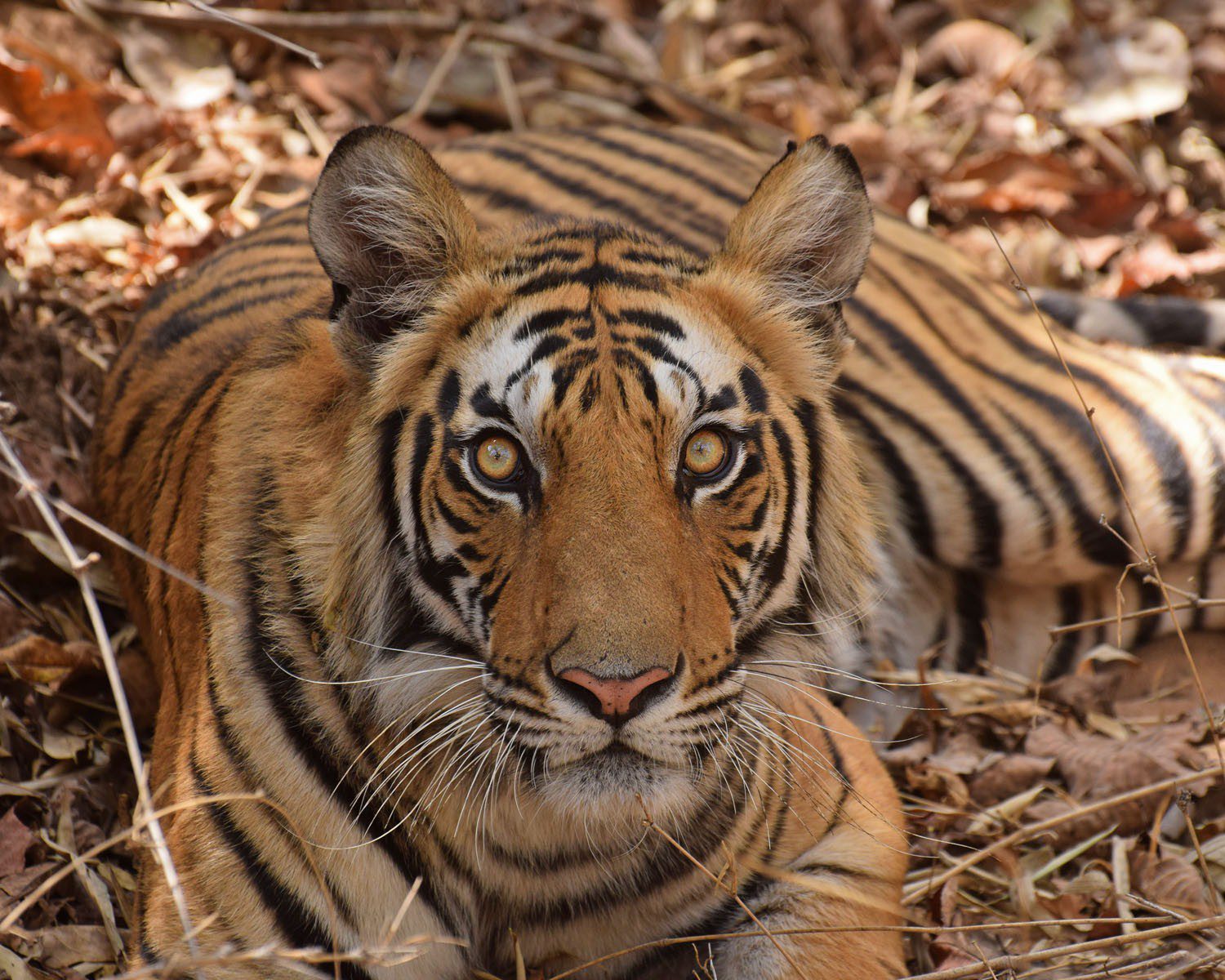
4. Tiger’s Ears and Sense of Hearing:
All tigers have noticeable white spotted on the back of their ears. The evolutionary purpose of these spots has not yet been determined, but some theories suggest that it is to confuse other predators, resembling false eyes, if they plan to attack from behind. Other theories suggest that it help cubs to follow their mother in long grass or dense forest. Tigers have good sense of hearing and can probably hear sounds in the frequency range of 100-200 kHz as compare to maximum 20 kHz a human ear can hear.
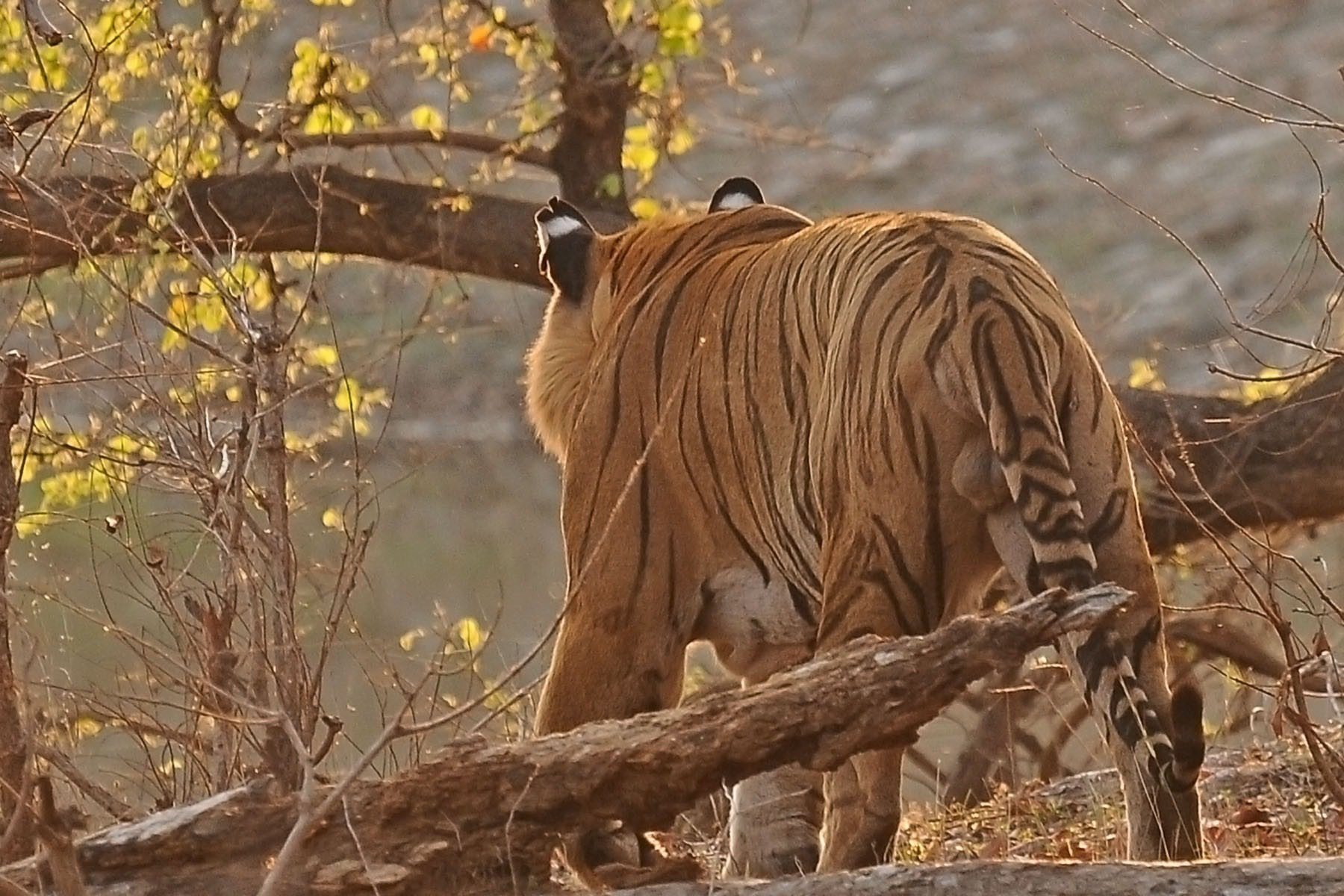
5. Sense of Smell for Tigers:
Compared to other carnivores like dogs and bears, tigers have poor smelling abilities. But a tiger’s sense of smell plays a central role in its communication with other tigers. Located on the roof of its mouth is the “Jacobson’s organ” which helps tiger to test scents it encounters in its environment. It does so through a behavior known as “Flehmen” which consists of opening the mouth with the head raised and sticking its tongue out briefly while the lips are curled and drawn back. It is performed to check whether a female tiger is in the area, or for rival male tigers encroaching in their territory.
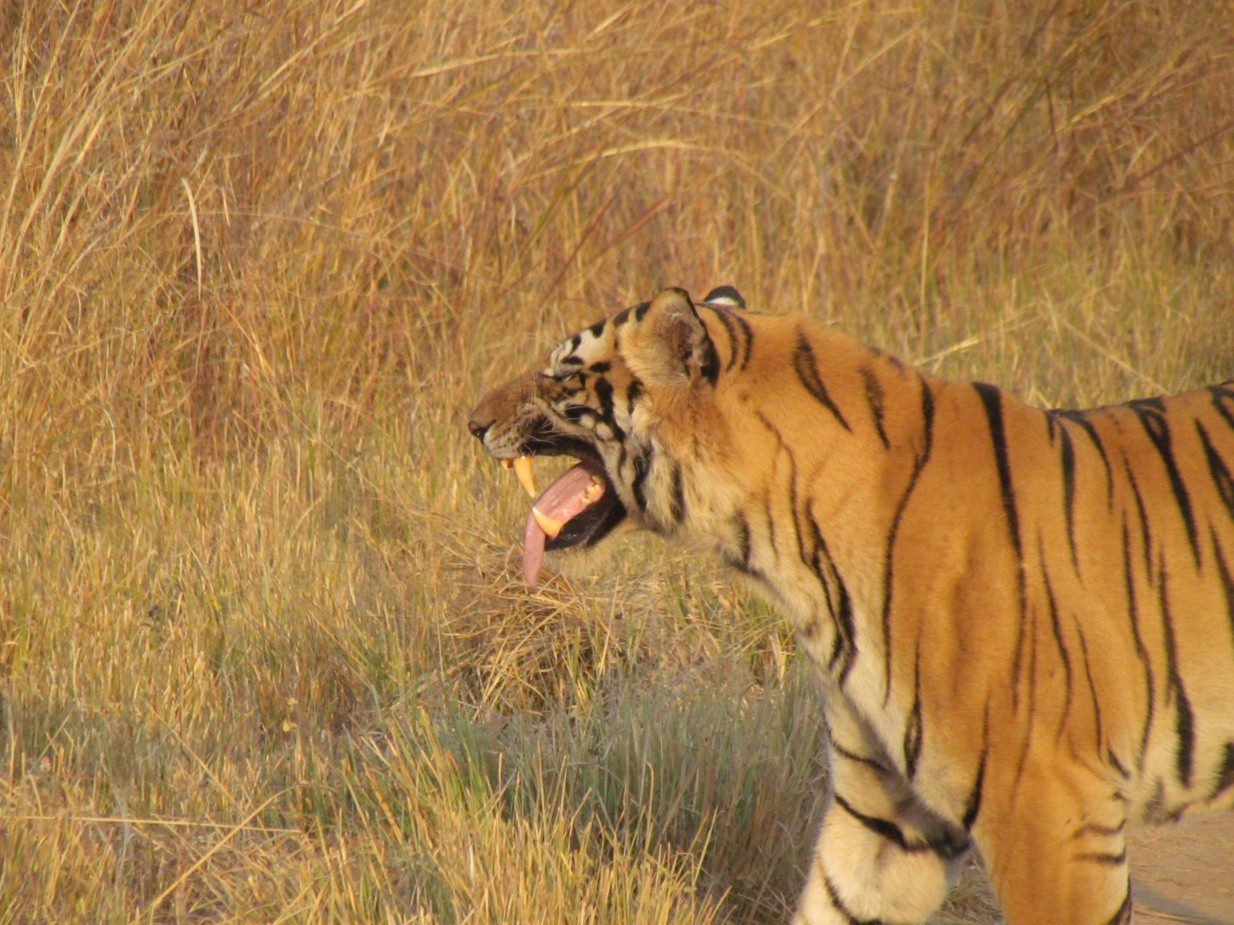
6. Tiger’s Tail:
The Tiger tail surprisingly plays an important role in catching the prey. Approximately a meter long, it gathers a lot of momentum when swung from side to side, helping the tiger to balance when it has to turn swiftly during the chase. It also plays a part in tiger communication. A tiger’s tail swishing madly from side to side or held low with just an occasional twitch indicates aggression. A relaxed tiger has a droopy tail.
If you ever go on a tiger safari and encounter a tiger, simply look at his tail and you’ll see how his tails react to his moves.
Nature has a predator for every species, depending upon its size and habitat. If there are no predators for a species than its population will grow exponentially, creating havoc in our ecosystem. Therefore, nature ensures that the species prey on each other, while competing for food and mate.
Tigers have indeed evolved over centuries, to become the apex predator of our food chain.
Written by: Gaurav Dhotre, Naturalist Pench Tree Lodge
Edited by: Natasha Sinha, Content Curator, Pugdundee Safaris
Visit our lodges in Kanha, Bandhavgarh, Pench, Satpura and Panna to watch various fascinating species of the forests frolic in the untamed wild. Get in touch with our trip curators at Pugdundee Safaris to book your next wildlife holiday.
Our trip curators at Pugdundee Safaris are more than happy to assist you. Phone: +91-011-40132680 Email: [email protected]

